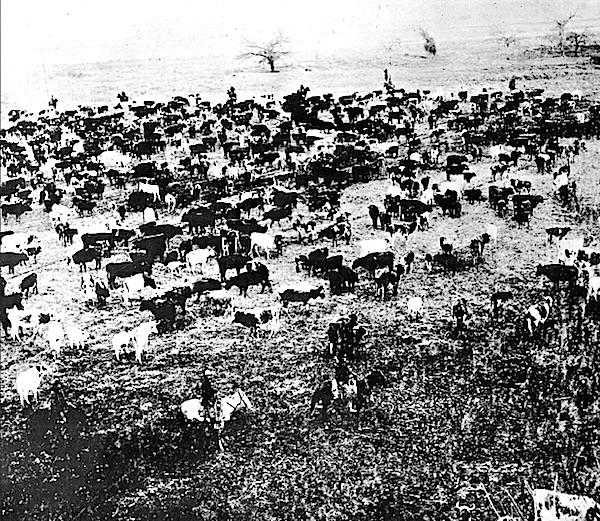
A herd of Texas longhorns photographed near Dodge City, Oklahoma, in 1878/Western History Collections, University of Oklahoma
Cattle drives during the latter half of the 19th century were a central thread in the nation's western expansion, as thousands of head of cattle were driven hundreds of miles to grazing lands and market. The grit, ruggedness, danger, and even romance of cattle drives spurred countless Westerns and fascinated television audiences glued to the Lonesome Dove miniseries in 1989.
Yet while the National Park Service says there is wide support for creation of Chisholm and Great Western National Historic Trails, one group that opposes the trails is the U.S. Cattlemen's Association. A key concern of the group is that private properties could be lost to help create these trails.
The potential use of eminent domain in securing land involved with these trails is especially concerning to our membership whose operations subsist off of both public and private lands. USCA firmly believes that no private property rights be acquired for this project without the willing consent of landowners.
The vast acreage represented within the Chisholm Trail and Great Western Trail and stated within the public law authorizing the study, ''¦from the vicinity of San Antonio, Texas ... to Enid, Oklahoma, Caldwell, Kansas, Wichita, Kansas, Abilene, Kansas, and commonly used segments running to alternative Kansas destinations" as well as "The Great Western Trail (also known as the 'Dodge City Trail'), from the vicinity of San Antonio, Texas, north-by-northwest [to] Oklahoma, north through Kansas to Dodge City, and north through Nebraska to Ogallala', is cause for careful scrutiny of any potential designation.
In the end, the group says, "USCA opposes the designation of the Chisholm Trail and Great Western Trail. Protecting private property rights is a priority of USCA and we will continue to advocate on these rights as this issue moves forward toward any potential designation."
The National Park Service in January released a draft feasibility study and environmental assessment on the proposed trails, and then moved into a 60-day public comment period. The agency now is reviewing those comments before publishing a final document.



Comments
Try this link:
http://parkplanning.nps.gov/document.cfm?parkID=456&projectID=30803&docu...
However, comment period is over...